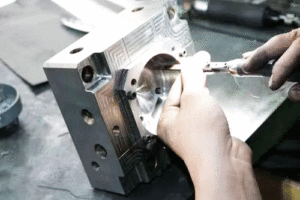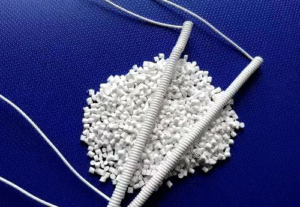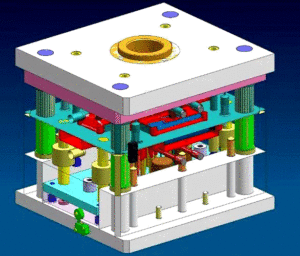
Polishing Treatment for Plastic Molds
Polishing Treatment for Plastic Molds With the widespread application of plastic products, such as daily-use items and beverage packaging containers, there is often a requirement
The barrel and screw constitute the extrusion system. Like the screw, the barrel also works under the conditions of high pressure, high temperature, severe wear and corrosion. In the extrusion process, the barrel is also used to transfer the heat to or away from the material. Besides, barrel is also equipped with a heating and cooling system with the machine head installed.
In addition, we should open a feeding port on the barrel. And the geometry of the feeding port and its position have a great influence on the feeding performance. The smoothness of the inner surface of the barrel and the groove on the inner wall of the feeding section have a great influence on the extrusion process. So we should consider the above factors when designing or selecting the barrel.
It is processed on the whole preform body. This structure can ensure higher manufacturing precision and assembly precision easily. Moreover, it can also simplify the assembly work and make the setting, assemble and disassemble of the heating and cooling system more convenient. The heat is more evenly distributed along the longitudinal direction. Naturally, this kind of barrel requires higher processing and manufacturing conditions.
It is processed on the whole preform body. This structure can ensure higher manufacturing precision and assembly precision easily. Moreover, it can also simplify the assembly work and make the setting, assemble and disassemble of the heating and cooling system more convenient. The heat is more evenly distributed along the longitudinal direction. Naturally, this kind of barrel requires higher processing and manufacturing conditions.
In order to meet the material requirements of the barrel and save valuable materials, a alloy steel bushing is inlaid inside the base of general carbon steel or cast steel in quite many barrels. The bushing can be removed and replaced after it is worn out. The bushing and the barrel must be well matched to ensure that the heat conduction on the entire barrel wall won’t be disturbed. Besides, there can’t be relative motion between the barrel and the bushing. And they can be easily removed. So it is necessary to select the appropriate matching accuracy.
In order to improve the solids conveying rate, one method is to increase the friction coefficient of the barrel surface. And another method is to increase the area of the material at the feeding port through the cross section perpendicular to the screw section. So we can set a longitudinal grooveon the inner wall of the feeding section of the barrel. What’s more, we can make the inner wall section of the barrel near the feeding port a cone.
To increase the solids delivery, there is another method. It is to cool the feeding section barrel. And its purpose is to keep the temperature of the conveyed material below the softening point or melting point. Avoid the melt film and maintain the solid friction properties of the material.
After adopting the above method, the transportation efficiency is increased from 0.3 to 0.6. Moreover, the extrusion volume is less sensitive to changes in die pressure.
The shape of the feeding port and its opening position on the barrel have a great influence on the feeding performance. The feeding port should enable the material to be fed into the barrel freely and efficiently without bridging. The design must also consider whether the feeding device is suitable for the feeding port. Also, whether it is conducive to cleaning and appropriate to install a cooling system in this section. The shape of the feeding port (top view) is round, square, and rectangular. Generally, rectangular ones are used, with the long side parallel to the diameter of the barrel. And the length is about 1.5-2 times the diameter of the screw.
Just like the screw, to meet the working requirements of the barrel, it must be made of high-quality materials with high temperature resistance, wear resistance, corrosion resistance and high strength. These materials also have good machinability and heat treatment properties. In addition to 45 steel, 40Cr, 38CrMoAL, it can also be made of cast steel and ductile iron. The feeding section with bushing can be made of high-quality cast iron.
In recent years, with the development of high-speed extrusion and engineering plastics, especially when extruding glass fiber reinforced plastics and plastics containing inorganic fillers, higher requirements are put forward for the abrasion and corrosion resistance of the barrel. Xaloy alloy developed by the United States, Belgium and other countries is a novel wear-resistant and corrosion-resistant material, and is currently widely used abroad. This material has a low melting point and good weldability with steel, good machining performance, good casting performance, good hardness and no casting stress. Even if it is bent after casting, it will not fall off in scale.
The powdered Xaloy alloy is heated together with the barrel at high temperature. For its low melting point, it can be melted into a fluid state at about 1200°C. The barrel is rotated at a high speed, and the huge centrifugal force generated by the molten Xaloy makes it cast on the inner wall of the red hot barrel. Its thickness is about 2 mm. After cooling, it is ground down about 0.20 mm, which already can meet the general requirements of the barrel.
According to reports, a Xaloy alloy produced in Belgium has a hardness value of Rc58-64. At 482°C, the hardness does not decrease significantly. While the corrosion resistance is 12 times greater than that of nitrided steel.
The barrel wall thickness is rarely scrapped due to insufficient strength except corrosion and wear. For the barrel wall thickness, we need to consider strength, and more importantly the process and thermal inertia of the barrel structure. The wall thickness determined by the latter two factors is often greater than the value calculated according to the strength conditions. There is no mature calculation method for calculating the wall thickness of the barrel according to the heat transfer characteristics of the barrel. Therefore, the wall thickness is usually determined based on empirical statistical analogy, and then the strength is checked.

Polishing Treatment for Plastic Molds With the widespread application of plastic products, such as daily-use items and beverage packaging containers, there is often a requirement

Injection Molding Techniques for TPE and TPR Injection Molding Techniques for TPE and TPR 1. Dry the TPE and TPR material before injection molding It

Winter Maintenance Measures for Injection Molding Machines As winter approaches and temperatures gradually drop, a cold chill envelops the earth. While ensuring personal warmth, it

Assessment Regulations for Mold Trial Exceeding 3 Times Assessment Regulations for Mold Trial 1. Purpose The purpose of this regulation is to standardize the work of